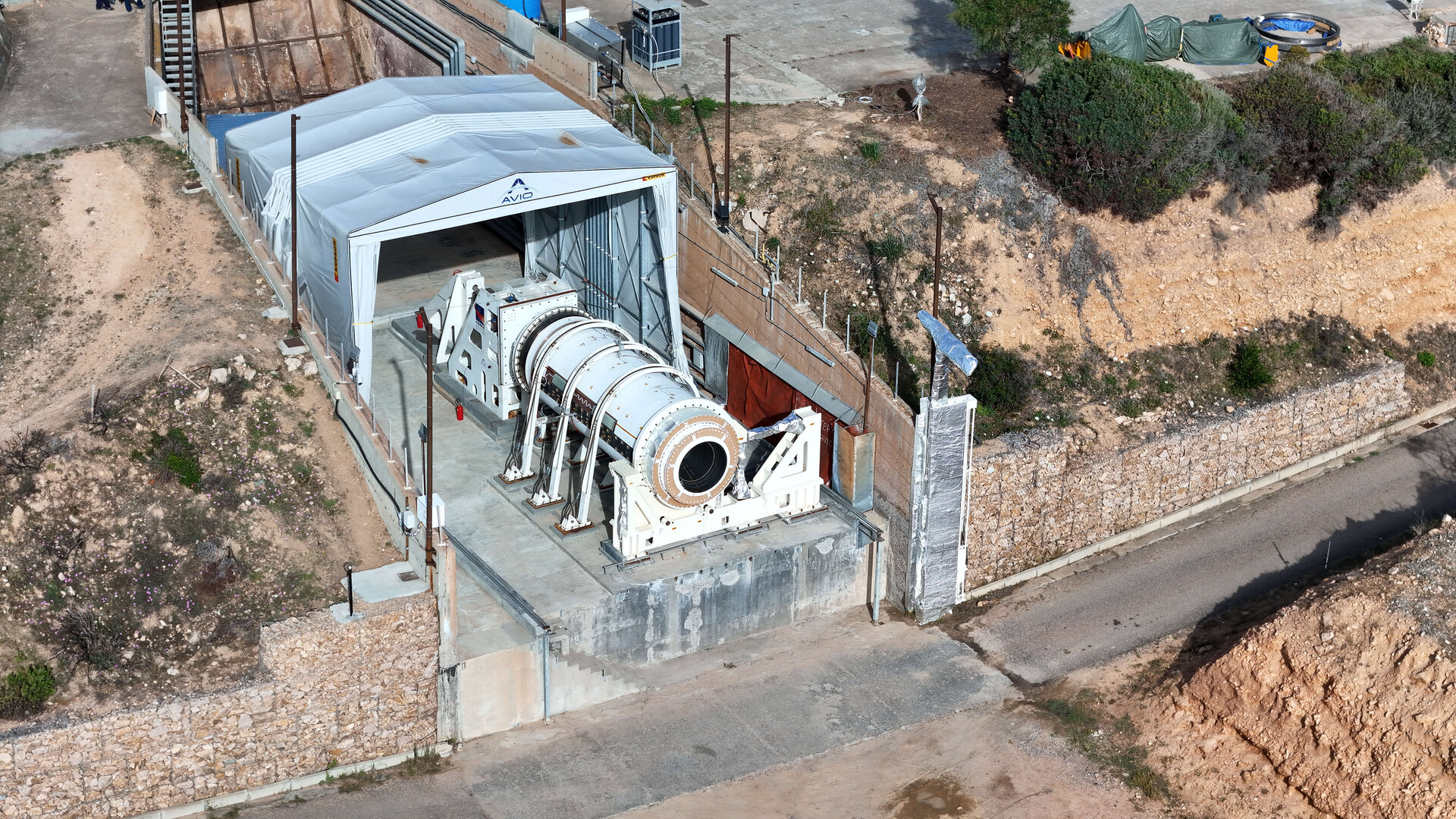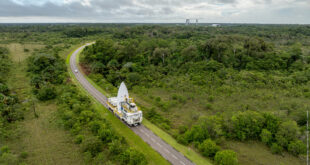
Ibadan, 31 May 2024. – Avio has tested the Zefiro-40 solid rocket motor, the second stage of the Vega-C rocket at its Salto di Quirra test facility in Sardinia, Italy. The rocket motor features an improved engine nozzle design, necessary to prepare for Vega-C’s return to flight by the end of 2024. The initial post-test review indicated that the new nozzle assembly performed as expected throughout the scheduled 94-second burning time of the test, simulating a nominal in-flight performance.
Avio will also conduct a second firing test after the summer to confirm the data it collected. Avio engineers will also review the data from the first test to prepare for a second test in October to qualify the second stage Zefiro-40 solid rocket motor for a return-to-flight by the end of 2024 from Europe’s Spaceport in French Guiana. The Zefiro-40 is a 7.6 m tall rocket motor, loaded with over 36 tonnes of solid propellant. For this test, the motor was installed on its horizontal test bench.
Vega-C is the larger evolution of the Vega family of rockets. The original Vega launched in 2012 and has flown 21 times. However, the last Vega flight will tentatively launch this summer, after which ESA will retire the model with Vega-C will taking over. The smaller Vega variant does not use the Zefiro-40 stage.
In anticipation of Vega-C’s return to flight, ESA secured the launch of “Smile” on the vehicle for late 2025. Smile is a collaboration between ESA and the Chinese Academy of Sciences (CAS). Standing for “Solar Wind Magnetosphere Ionosphere Link Explorer”, it aims to enable a better understanding of the interaction between the Sun and Earth. Vega-C will consequently place Smile in a low-Earth orbit, where it will propel itself to a high-Earth orbit.





